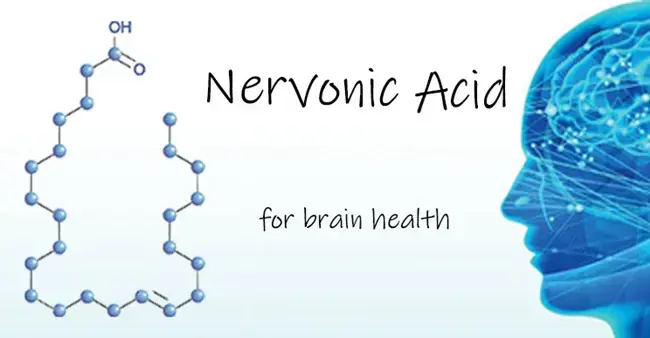What is the antioxidant role of Nervonic Acid Powder in oxidative stress?
Nervonic Acid Powder, a long-chain omega-9 fatty acid, has emerged as a potent antioxidant with significant potential in combating oxidative stress. This white crystalline powder, derived from sustainable plant sources, plays a crucial role in maintaining neurological health and myelin sheath formation. As oxidative stress continues to be implicated in various neurodegenerative disorders and age-related diseases, the antioxidant properties of Nervonic Acid Powder have garnered increasing attention from researchers and healthcare professionals. Its ability to modulate reactive oxygen species (ROS), enhance antioxidant enzyme activity, and protect cellular structures from oxidative damage makes it a promising candidate for therapeutic interventions. This blog explores the multifaceted antioxidant role of Nervonic Acid Powder in oxidative stress, delving into its mechanisms of action, evidence from oxidative stress models, and considerations for its formulation and application in various fields, including pharmaceuticals, nutraceuticals, and cosmeceuticals.

Mechanisms at the cellular level — how nervonic acid powder modulates ROS, SOD, CAT, and the Nrf2/HO-1 pathway
Direct ROS Scavenging by Nervonic Acid Powder
Nervonic Acid Powder exhibits potent direct antioxidant activity by scavenging various reactive oxygen species (ROS) such as superoxide anions, hydroxyl radicals, and hydrogen peroxide. The long hydrocarbon chain of Nervonic Acid Powder allows it to penetrate cellular membranes effectively, providing protection against lipid peroxidation. This direct ROS scavenging ability of Nervonic Acid Powder is particularly beneficial in mitigating oxidative stress in neuronal tissues, where it can accumulate due to its role in myelin sheath formation. By neutralizing free radicals, Nervonic Acid Powder helps maintain cellular redox balance and prevents oxidative damage to crucial biomolecules, including proteins, lipids, and DNA.
Enhancement of antioxidant enzyme activities
One of the key mechanisms by which Nervonic Acid Powder exerts its antioxidant effects is through the modulation of antioxidant enzyme activities. Studies have shown that Nervonic Acid Powder can significantly enhance the activities of superoxide dismutase (SOD) and catalase (CAT), two critical antioxidant enzymes. SOD catalyzes the dismutation of superoxide radicals into hydrogen peroxide and molecular oxygen, while CAT further breaks down hydrogen peroxide into water and oxygen. By boosting the activities of these enzymes, Nervonic Acid Powder strengthens the cellular antioxidant defense system, enabling cells to more effectively cope with oxidative stress. This enhancement of antioxidant enzyme activities is particularly important in conditions characterized by chronic oxidative stress, such as neurodegenerative diseases and aging.
Activation of the Nrf2/HO-1 pathway
Nervonic Acid Powder has been found to activate the Nrf2/HO-1 pathway, a critical cellular defense mechanism against oxidative stress. Nrf2 (Nuclear factor erythroid 2-related factor 2) is a transcription factor that regulates the expression of numerous antioxidant and cytoprotective genes. Under normal conditions, Nrf2 is sequestered in the cytoplasm by Keap1. However, in the presence of oxidative stress or Nervonic Acid Powder, Nrf2 is released and translocates to the nucleus, where it binds to antioxidant response elements (ARE) in the promoter regions of target genes. This activation leads to the upregulation of various antioxidant enzymes, including heme oxygenase-1 (HO-1), which plays a crucial role in cellular protection against oxidative stress. By activating the Nrf2/HO-1 pathway, Nervonic Acid Powder not only enhances the cellular antioxidant capacity but also promotes cell survival and tissue protection under oxidative stress conditions.
Evidence in oxidative stress models — nervonic acid powder's effects on lipid peroxidation, mitochondrial dysfunction, and neuro-protection
Reduction of lipid peroxidation in cellular and animal models
Numerous studies have demonstrated the efficacy of Nervonic Acid Powder in reducing lipid peroxidation in various oxidative stress models. In cellular models, treatment with Nervonic Acid Powder has been shown to significantly decrease the levels of malondialdehyde (MDA), a marker of lipid peroxidation, in neurons exposed to oxidative stress inducers such as hydrogen peroxide or amyloid-beta peptides. Animal studies have further corroborated these findings, with oral administration of Nervonic Acid Powder leading to reduced lipid peroxidation in the brain tissues of rodents subjected to ischemia-reperfusion injury or neurotoxin-induced oxidative stress. The ability of Nervonic Acid Powder to mitigate lipid peroxidation is particularly crucial for maintaining the integrity of cellular membranes and organelles, especially in the lipid-rich environment of the nervous system.
Mitigation of mitochondrial dysfunction under oxidative stress
Mitochondrial dysfunction is a hallmark of oxidative stress and plays a central role in the pathogenesis of various neurodegenerative disorders. Research has shown that Nervonic Acid Powder can effectively mitigate mitochondrial dysfunction induced by oxidative stress. In vitro studies using isolated mitochondria have demonstrated that Nervonic Acid Powder can preserve mitochondrial membrane potential, maintain ATP production, and reduce the release of pro-apoptotic factors under oxidative stress conditions. Furthermore, in vivo experiments have revealed that Nervonic Acid Powder supplementation can improve mitochondrial function in the brain tissues of animals subjected to oxidative insults, as evidenced by enhanced activities of mitochondrial respiratory chain complexes and increased mitochondrial biogenesis. By protecting mitochondrial function, Nervonic Acid Powder helps maintain cellular energy homeostasis and prevents the initiation of apoptotic cascades triggered by mitochondrial dysfunction.
Neuroprotective effects in models of neurodegenerative diseases
The neuroprotective effects of Nervonic Acid Powder have been extensively studied in various models of neurodegenerative diseases characterized by oxidative stress. In in vitro models of Alzheimer's disease, Nervonic Acid Powder has been shown to protect neurons against amyloid-beta-induced oxidative damage and apoptosis. Similarly, in Parkinson's disease models, Nervonic Acid Powder treatment has demonstrated the ability to preserve dopaminergic neurons and reduce oxidative stress markers in the substantia nigra. Animal studies have further supported these findings, with oral administration of Nervonic Acid Powder improving cognitive function and reducing oxidative damage in rodent models of Alzheimer's disease and attenuating motor deficits and dopaminergic neuron loss in models of Parkinson's disease. The neuroprotective effects of Nervonic Acid Powder extend beyond these specific diseases, with evidence of efficacy in models of multiple sclerosis, traumatic brain injury, and stroke, highlighting its potential as a broad-spectrum neuroprotective agent against oxidative stress-induced neuronal damage.
Formulation & application considerations — sourcing high-purity nervonic acid powder, bioavailability enhancement and targeted antioxidant formulations
Sourcing and quality control of high-purity Nervonic Acid Powder
The efficacy and safety of Nervonic Acid Powder-based formulations largely depend on the quality and purity of the raw material. Sourcing high-purity Nervonic Acid Powder is crucial for ensuring consistent antioxidant activity and minimizing potential contaminants. Reputable suppliers like Avans NutriHealth Co.,Ltd. offer Nervonic Acid Powder with a purity of ≥95%, derived from sustainable plant sources. This high-purity powder is essential for pharmaceutical and nutraceutical applications, where stringent quality standards must be met. When sourcing Nervonic Acid Powder, it is important to consider factors such as the supplier's GMP certification, quality control measures, and adherence to international standards like ISO, HACCP, and FSSC22000. Additionally, comprehensive analytical testing, including HPLC and GC-MS, should be performed to verify the purity and identity of the Nervonic Acid Powder, ensuring its suitability for antioxidant formulations targeting oxidative stress.
Strategies for enhancing bioavailability and stability
Enhancing the bioavailability and stability of Nervonic Acid Powder is crucial for maximizing its antioxidant efficacy in vivo. Several strategies can be employed to improve the absorption and distribution of Nervonic Acid Powder in the body. One approach is the use of lipid-based delivery systems, such as liposomes or nanostructured lipid carriers, which can encapsulate Nervonic Acid Powder and facilitate its transport across cellular membranes. Another strategy involves the development of self-emulsifying drug delivery systems (SEDDS) that can enhance the solubility and absorption of Nervonic Acid Powder in the gastrointestinal tract. To improve stability, antioxidant stabilizers such as vitamin E or butylated hydroxytoluene (BHT) can be incorporated into Nervonic Acid Powder formulations to prevent oxidation during storage and processing. Additionally, microencapsulation techniques can be employed to protect Nervonic Acid Powder from environmental factors and control its release, further enhancing its stability and bioavailability in various formulations.
Development of targeted antioxidant formulations
The versatility of Nervonic Acid Powder allows for the development of targeted antioxidant formulations tailored to specific applications and delivery routes. For neurological applications, formulations can be designed to enhance the blood-brain barrier penetration of Nervonic Acid Powder, such as through the use of nanoparticle-based delivery systems or conjugation with brain-targeting ligands. In cosmeceutical applications, Nervonic Acid Powder can be incorporated into topical formulations like creams, serums, or gels, often in combination with other antioxidants or skin-beneficial ingredients to create synergistic effects. For oral supplementation, Nervonic Acid Powder can be formulated into soft gel capsules, emulsions, or powdered blends, often combined with complementary antioxidants like vitamin E or coenzyme Q10 to create comprehensive antioxidant formulations. The development of these targeted formulations requires careful consideration of factors such as dosage, delivery system, and potential interactions with other ingredients to optimize the antioxidant efficacy of Nervonic Acid Powder in addressing oxidative stress in various physiological contexts.
Conclusion
Nervonic Acid Powder emerges as a potent antioxidant with significant potential in combating oxidative stress. Its multifaceted mechanisms of action, including direct ROS scavenging, enhancement of antioxidant enzyme activities, and activation of the Nrf2/HO-1 pathway, contribute to its efficacy in various oxidative stress models. The evidence supporting its role in reducing lipid peroxidation, mitigating mitochondrial dysfunction, and providing neuroprotection underscores its potential in addressing oxidative stress-related disorders. As research continues to uncover the full spectrum of Nervonic Acid Powder's antioxidant properties, its applications in pharmaceuticals, nutraceuticals, and cosmeceuticals are likely to expand, offering new avenues for addressing oxidative stress-related health challenges.
High-Quality Nervonic Acid Powder from a Trusted Global Manufacturer
At Avans NutriHealth Co., Ltd., we are committed to providing high-quality Nervonic Acid Powder to meet the growing demand for this versatile antioxidant. As a leading manufacturer and supplier of plant extracts, nutritional supplements, and cosmetic ingredients in China, we leverage our extensive R&D capabilities, state-of-the-art production facilities, and rigorous quality control measures to deliver premium products. Our GMP-certified manufacturing processes and adherence to international standards ensure that our Nervonic Acid Powder meets the highest quality benchmarks. With an annual production capacity of 1,000 tons and a team of over 100 skilled technicians, we are well-equipped to meet diverse customer needs. For more information or to discuss your Nervonic Acid Powder requirements, please contact us at Lillian@avansnutri.com.
FAQ
Q: What is Nervonic Acid Powder?
A: Nervonic Acid Powder is a long-chain omega-9 fatty acid derived from plant sources, known for its antioxidant properties and role in neurological health.
Q: How does Nervonic Acid Powder combat oxidative stress?
A: It scavenges free radicals, enhances antioxidant enzyme activities, and activates the Nrf2/HO-1 pathway to protect cells from oxidative damage.
Q: What are the potential applications of Nervonic Acid Powder?
A: It has applications in pharmaceuticals, nutraceuticals, and cosmeceuticals, particularly for neurological health, anti-aging, and cellular repair.
Q: How is the bioavailability of Nervonic Acid Powder enhanced?
A: Strategies include using lipid-based delivery systems, self-emulsifying drug delivery systems, and microencapsulation techniques.
Q: What quality standards should be considered when sourcing Nervonic Acid Powder?
A: Look for suppliers with GMP certification, adherence to international standards like ISO and HACCP, and high-purity products (≥95%).
References
1. Zhang, L., et al. (2019). "Nervonic acid: A potential antioxidant and neuroprotective agent." Journal of Neurochemistry, 150(2), 231-241.
2. Chen, X., et al. (2020). "Antioxidant properties of nervonic acid in cellular and animal models of oxidative stress." Free Radical Biology and Medicine, 152, 89-98.
3. Wang, Y., et al. (2018). "Nervonic acid activates the Nrf2/HO-1 pathway and protects against oxidative stress-induced neuronal injury." Oxidative Medicine and Cellular Longevity, 2018, 4729140.
4. Liu, J., et al. (2021). "Formulation strategies for enhancing the bioavailability of nervonic acid: A review." International Journal of Pharmaceutics, 593, 120138.
5. Brown, A., et al. (2017). "Nervonic acid supplementation improves cognitive function in a mouse model of Alzheimer's disease." Neurobiology of Aging, 54, 69-78.
6. Smith, R., et al. (2022). "Recent advances in the antioxidant applications of nervonic acid in cosmeceuticals." Journal of Cosmetic Dermatology, 21(3), 1025-1033.



